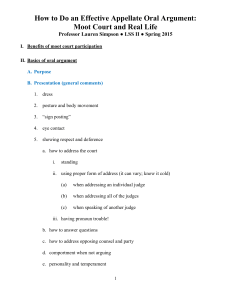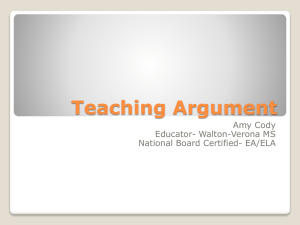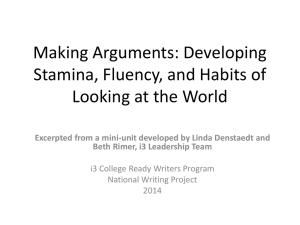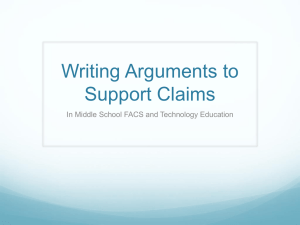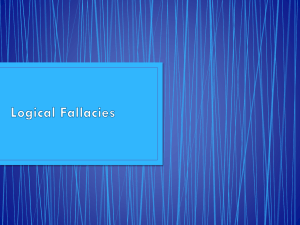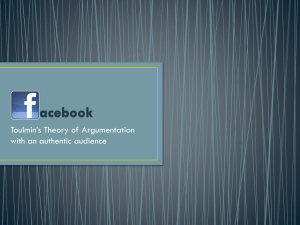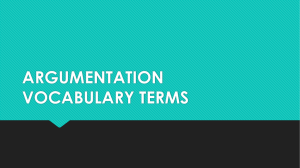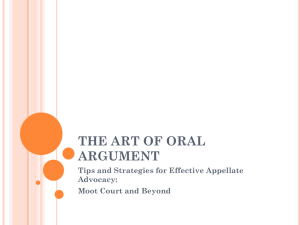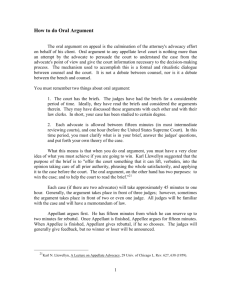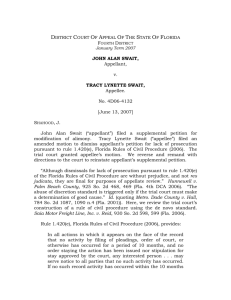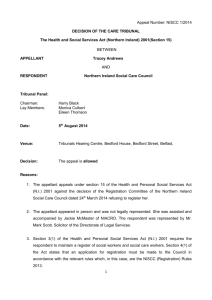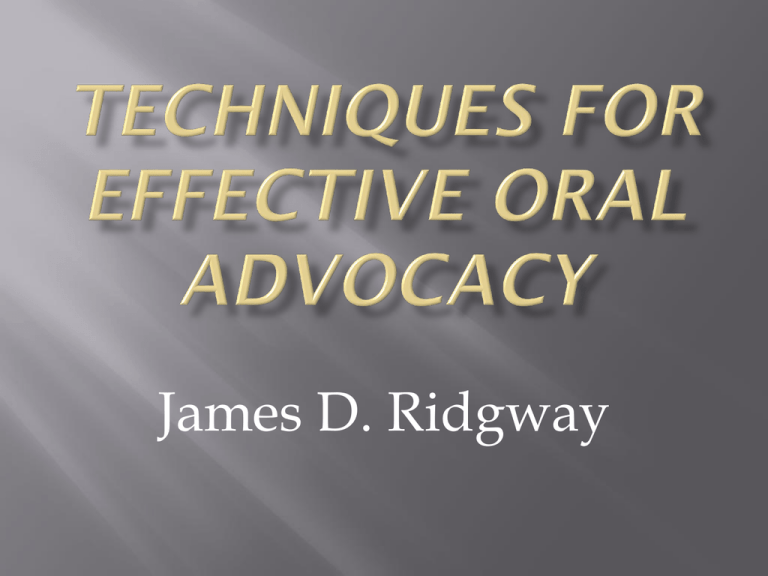
James D. Ridgway
The views expressed here are my own.
I am not here to talk about the CAVC
or any of the judges of this Court.
Complete Lack of Natural Talent
Collegiate Public Speaker
50+ Arguments as an Appellate
Prosecutor
Oral Argument is an Art, Not a
Science.
The Goal of Oral Argument
Finding Your Focus
Engaging the Opposing Argument
Preparing Your Presentation
Working With the Judges at Argument
Analyzing Your Performance
Conclusion
To Win
To Have the Court’s Opinion Say
Exactly What You Want
Plan
the Parenthetical
To Control the Conversation in
Which the Decision is Made
Finding the Heart of Your
Argument
What
Question Do You Fear?
Reread the Opposing Brief!
How Big is the Heart?
5
minutes
7 sentences
JOHN MAEDA, THE LAWS OF
SIMPLICITY (2006)
“Simplicity
is about subtracting the
obvious and adding the meaningful.”
Sub-points
Same
Rules Apply
Roman Numeral Outline Plan
What Is the Story of Your
Argument?
What
Happened?
What Should Have Happened?
What Happens When You Change
the Facts?
Do You Have a Good Analogy?
What Is the Nature of the Legal
Argument?
Is this About Interpreting the General
Rule?
Is this About an Exception?
Is this About the Interaction of Multiple
Authorities?
Are they Exclusive or Overlapping?
“Same”/ “Different”
Quotations
Your notes are just to jog your
memory.
You will have far, far more
information than you will ever get to
in your argument.
You need to have key information
pop out at you.
Apples v. Oranges
“Appellant/Appellee would be correct
IF . . .”
What is your key authority? What is
theirs?
Identifying Weaknesses
ANTHONY WESTON, A RULEBOOK FOR
ARGUMENTS (3d ed. 2000).
Setting Up Questions
“Appellant/Appellee cannot cite a
page in the record where . . .”
“Appellant/Appellee cannot cite a
case in which the Court held X
without fact Y.”
“Not one case relied upon by the
Appellant/ Appellee involves fact Z,
which is true in this case.”
Practice Out Loud
Imprint Your Argument
Practice Cadence, Too
Arguing With Sound Bites
Avoid Adjectives
“Canning” Common Issues
Moving Around Your Argument
Cut Up Your Outline
Answer Questions
Return to Your Focus
First, Last, Most Often
Making Concessions
Watching the Bench
Pencils
Facial Expressions
Do Not Attack Opposing Counsel
. . . Directly
Reviewing Your Argument
Reading the Opinion
Rereading Your Brief
“If
the Audience Did
Not Understand You,
Then You Failed to
Communicate.”
Persuasion is About Influencing the
Conversation in Which the Decision is Made.
Oral Argument is About Setting Forth and
Defending Your Core Theory.
Engaging the Opposing Argument is Critically
Important.
Craft and Rehearse as Many Phrases as
Possible Beforehand.
At Argument, Let the Judges Go Where They
Want to Go, and Then Bring Them Back.
Take Opinions as Feedback.
Cases
are Won and Lost on
the Briefs.


